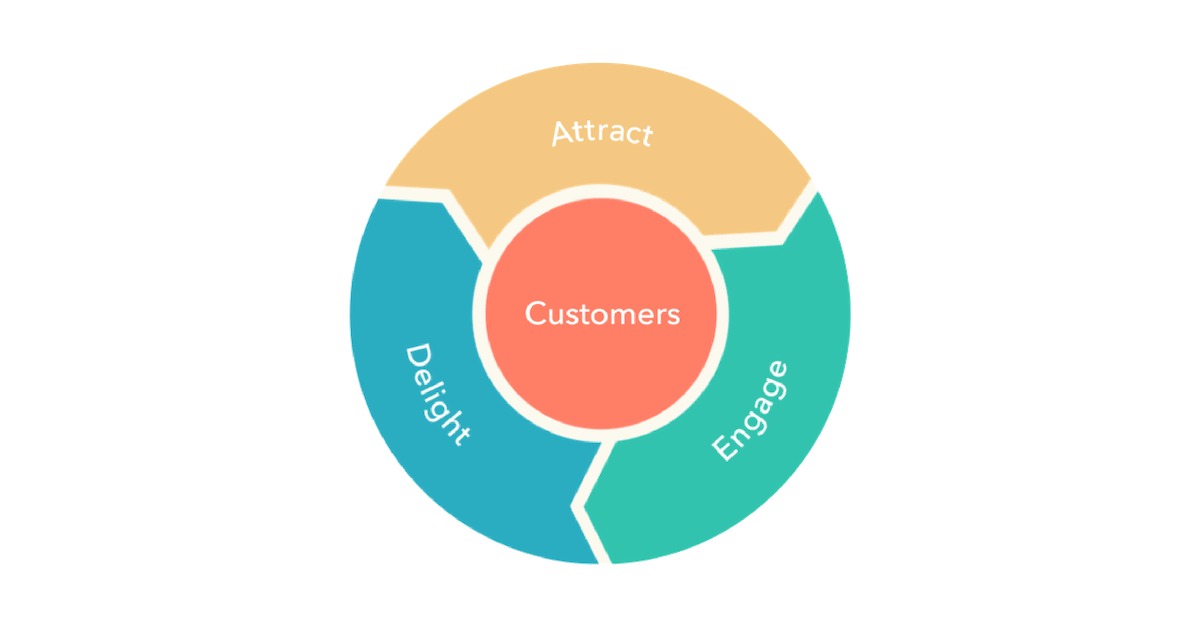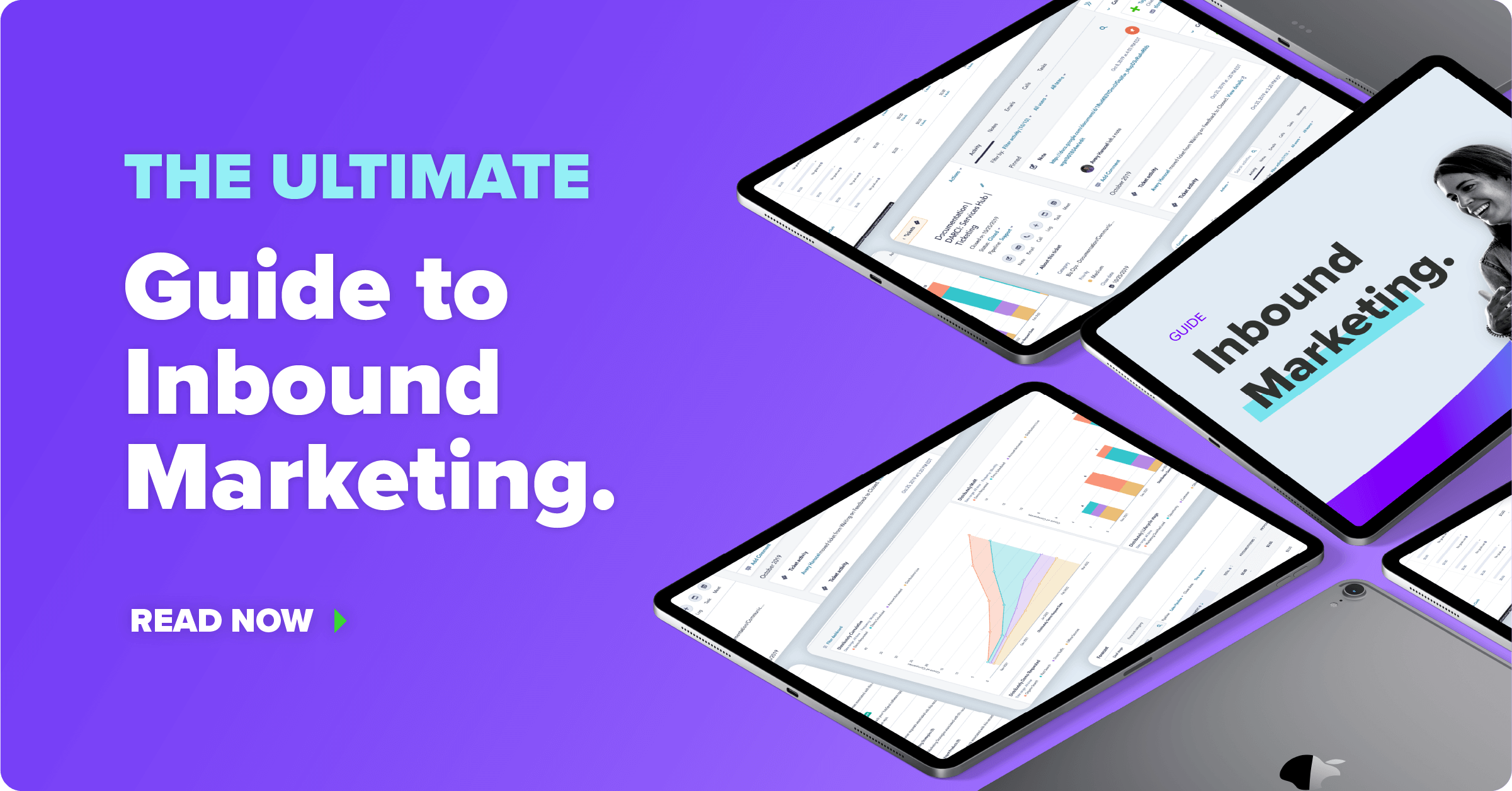What is Inbound Marketing?
It’s no secret that buyers have more options and more control of the buying process than ever before. The fight for their time and attention is only going to get more competitive as technology continues to evolve and customers become more empowered.
Inbound marketing is the standard way to reach buyers nowadays. To keep up with your competitors and reach your prospects, inbound is a methodology you have to adopt in order to build your brand and evangelize your customers.
What is Inbound Marketing?
Inbound marketing is a customer-centric approach that focuses on drawing high-fit customers in as opposed to blasting your message to anyone and everyone.
Through tactics like blogging, social media and SEO, inbound marketing attracts customers to your company using helpful, relevant content. Inbound tactics will continue to help your company grow after you’ve finished investing in them (unlike outbound tactics like paid ads or call lists), providing scalable long-term ROI.
Effective inbound marketing is hyper-personalized, contextually relevant and meets the prospect where they’re at.
Key Elements of a Successful Inbound Marketing Strategy
Attract, engage and delight

Originally, the inbound methodology was represented by a funnel, where customers entered through the top, moved from marketing to sales and then flowed out the bottom as customers. However, in 2018 the model changed to the more customer-centric flywheel that puts customers in the center of your marketing tactics.
- Attract stage: The first stage of inbound marketing focuses on attracting the right visitors to your website. Using tools like social media, content strategy, videos, blogging and ads, draw in prospects who can benefit from your solution by providing valuable information when, where and how they want it.
- Engage stage: The second stage of inbound marketing is focused on building trust and relationships with your leads. After a site visitor converted into a lead, continue to forge a relationship through contextually-relevant, timely conversations about their goals and challenges. Engage stage tactics include pop-up forms, email marketing, conversational bots and marketing automation.
- Delight stage: The final stage is to delight your leads and customers with smart content, email marketing and conversational marketing. Encourage long-lasting brand loyalty with personalized relevant content and then send your customers right back into the attract stage where you market to them for retention and upsells.
SMART goals
Successful, data-driven inbound marketing is guided by concrete goals. SMART goals are specific, measurable, attainable, relevant and timely. In addition to being SMART, your goals should also align with your buyers’ needs.
Buyer personas and the buyer’s journey
To effectively create a marketing strategy with your buyers’ needs in mind, you need to know who your buyers are. This is where buyer personas come in.
Buyer personas are semi-fictional representations of the people you’ll sell your solution to. Consult with your sales, marketing and services team to understand who your ideal customers are and who the specific people involved in the decision-making process will be.
For example, your primary persona might be a department head who’ll act as a champion for your solution but needs approval from a VP or executive before making a purchase.
Using knowledge gathered from within your company and through external research, define three or four primary buyer personas for your business, identify their demographics, firmographics and psychographics in addition to their day-to-day work habits, their pain points and how your solution can address those challenges.
Once your buyer personas are fleshed out, create a marketing strategy around the different stages of the buyer’s journey. Think about what content would be most valuable to a buyer at each stage in the journey and how to deliver it to where they’ll be at.
SEO and SEM
It doesn’t matter how awesome or targeted your website is if no one can find it. On-page search engine optimization (SEO), a keyword strategy and paid ads are necessary to support your inbound efforts.
Develop a keyword strategy around what your buyer personas are searching for when looking for solutions and then optimize your website to match those keywords. Then develop a paid strategy to place targeted in front of high-fit prospects.
Don’t just set your SEO/SEM strategy and forget it. Continue to monitor and improve it over time and make sure you’re also taking the searcher’s intent into consideration.
Strategic content development
From video to blogs to e-books to infographics, content is one of the most important components of your inbound marketing efforts. Content is what brings visitors to your website, and it’s what keeps them there.
However, content shouldn’t just be created for the sake of it. Before writing, designing or recording any content, a content strategy should be in place that maps every content offer you create to your buyer personas.
Ask yourself, what information are my buyer personas looking for? What format works best to communicate information to them? What content would be helpful to my buyer personas at each stage in their buyer’s journey? What’s an appropriate next step after this piece of content to continue moving the buyer through the buying process?
The answers to those questions should guide your content strategy, conversion paths and content creation.
Email nurture strategy
After a site visitor provides their email address and opts in for email communication, email is a quick, convenient way to continue engaging with them. You can create email nurture tracks to provide relevant follow-up content after a prospect has downloaded an initial premium content offer. Re-engagement campaigns allow you to revive interest in your brand with leads who have stopped interacting with your content, and you can send emails to announce product updates or new offers to your existing customers.
However, before sending an email, keep in mind the deluge of marketing emails the receiver is getting on a weekly, or even daily, basis. You don’t want your emails to be viewed as another message just clogging up their inbox. Make sure your emails are all contextually relevant and provide value to the recipients.
Segment your contact list based on persona and buyer’s journey stage to ensure you’re sending targeted, conversion-optimized emails that’ll nurture the reader toward sales and keep your brand top-of-mind.
Conversion optimization
Once you bring visitors to your website, what do you want them to do next? Your site visitor shouldn’t have to guess where they should go or what they should click on to progress through your site. Your site should be optimized for conversions.
Integrate clear conversion pathways for each of your primary personas into your website. These pathways should be considered whenever you’re designing or redesigning a B2B site, because if visitors aren’t converting on your website, what’s the point?
A conversion pathway should start with relevant top-of-the-funnel content that features a call-to-action (CTA) leading to a premium content offer. Then there needs to be a way to request and receive that content offer, whether through a chatbot or forms and landing pages. Finally, regardless of where a visitor is on your site, there should be a bottom-of-the-funnel CTA driving them to take the end action on your site, whether that’s downloading a demo or booking a meeting with sales.
By optimizing your site for conversion, you create a low friction environment for visitors as they progress through their buyer’s journey.
Sales support and enablement
Inbound marketing doesn’t end when a lead is passed to sales. As part of the effort to continuously delight prospects throughout all stages of their buyer’s journey, marketing and sales need to work closely together to make sure marketing is bringing in the right leads for sales and sales is following up with them in an inbound way.
Your marketing and sales team should regularly meet and discuss ideas and challenges. Additionally, they should use a service-level agreement (SLA) to ensure they’re aligned on lifecycle stage definitions and both teams understand what the other’s responsibilities are.
Additionally, marketing and sales should help each other. Sales should provide information they’ve learned from talking with leads about what marketing materials are working and what pain points aren’t being sufficiently addressed. Marketing should provide sales enablement materials like case studies, demo videos and assessments that can help sales reps convey the value of your solution.
The Takeaway
Not using inbound is unsustainable — your product can only differentiate itself so much. Creating a positive experience for your buyers and fostering a community around your brand is necessary for long-term success.
When creating your inbound marketing plan, market to your personas the way you’d want to be marketed to and transfer your positive B2C buying experiences to the B2B buying process you create.
Instead of focusing on how your company is marketing and selling, think about how your customers buy. Everyone’s the main character in their own story, so make sure you treat your buyer’s as such and place them in the center of your marketing, sales and service process.
Quinn Kanner
Quinn is a writer and copyeditor whose work ranges from journalism to travel writing to inbound marketing content.





